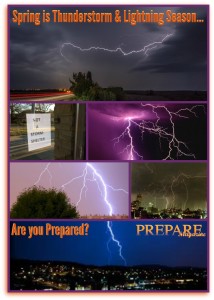 Severe Spring Weather Awareness Week Continues as we look at Thunderstorms and Lightning.
Severe Spring Weather Awareness Week Continues as we look at Thunderstorms and Lightning.
Every thunderstorm produces lightning. All electrical storms are dangerous. While lightning casualties have actually reduced over the past 30 years, lightning continuous to be one of the leading three storm-related killers in the USA. Typically in United State, lightning kills about 67 men, women or children and harms hundreds more. Although most who suffer a strike of lightning may make it through alive, folks struck by lightning will frequently report a range of lasting, incapacitating symptoms.
Various other dangers connected with thunderstorms include tornadoes, sturdy winds, hailstorm as well as flash flooding. Flash flooding takes account for more fatalities — greater than 140 yearly– than any other thunderstorm-associated risk. Little known phenomenons called: “Dry Thunderstorms” are storms that do not produce rain that reaches the ground are most widespread in the western USA. Falling raindrops evaporate, but during these dry thunderstorms, lightning can still strike the ground and also could begin wildfires.
[wpgfxm_contentbox width=”90%” bg_color=”#AB45E6″ b_color=”#050C42″ style=”double” top=”2px” right=”none” bottom=”2px” left=”none” radius=”0px”]Get Your FREE Digital Subscription to PREPARE Magazine. Get Prepared Now![/wpgfxm_contentbox]
Thunderstorms Facts:
- Warm and moist conditions are precursors for developing potentially strong thunderstorms.
- They usually generate massive amounts of rain for a quick duration, anywhere from 30 minutes to an hour.
- Several of the most serious threats occur when a single storm affects one location for a prolonged time.
- They may take place singly, in clusters or in lines.
- About 10 percent of all thunderstorms are categorized as severe, meaning one that generates hailstorms which contain hail that is at least an inch or bigger in diameter and has winds of approximately 58 mph or greater; conditions which also create a tornado.
Lightning Facts:
- Lightning’s unpredictability increases the threat to people and property.
- Your chances of being struck by lightning are approximated to be 1 in 600,000 but can be reduced even further by knowing and practicing preventative measures.
- Most deaths and/or injuries happen when people are caught outdoors in the summer months. This can be during the day or night.
- Lightning typically strikes before and after rain and might occur as far away as 10 miles far from any type of rainfall.
- “Heat lightning” is in fact lightning from a thunderstorm that may simply be too far away to be heard. Nevertheless, it might be moving in your direction.
- Despite the common myth, lightning can strike the same place twice.
- Lightning strike victims DO NOT have an electric charge and ought to be attended to quickly.
[wpgfxm_contentbox width=”90%” bg_color=”#AB45E6″ b_color=”#050C42″ style=”double” top=”2px” right=”none” bottom=”2px” left=”none” radius=”0px”] A FREE Digital Subscription to PREPARE Magazine encourages you each month![/wpgfxm_contentbox]
Lightning is a stunning, impressive, sensational dance of brilliance across the sky, however it can be fatal. Thankfully, most lightning-related fatalities are avoidable. Follow these action steps to safety before there’s a dazzling light show overhead:
1. Know the 30/30 lightning protection policy: When you see a lightning flash, begin to count. If you don’t make it to 30 prior to another roll of thunder, seek shelter quickly. Then, remain indoors for HALF AN HOUR after the last boom of thunder has been heard.
2. Locate shelter right away!
While the majority of people look for shelter if lightning seems close, people often wait far too long to seek cover. If you are able to identify lightning at all, it could be close enough to strike you. Do not wait for it to strike closer to you to get to safety.
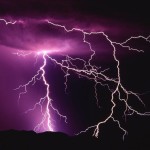 If you discover yourself caught outdoors in a lightning storm, the trick to reducing risk is to go inside an enclosed structure.
If you discover yourself caught outdoors in a lightning storm, the trick to reducing risk is to go inside an enclosed structure.- Never ever stand under a tree, and be sure to stay clear of power lines as they’re both outstanding conductors of electrical power and thus may increase the chances of death or significant injury.
- Locate shelter near or inside a stony shelter, such as a cinder block building, cavern or cave.
3. While inside the shelter…
- DO NOT use corded or electric cordless phones.
- AVOID using electrical devices. Electric cords could be conduits for lightning to enter your shelter.
- DO NOT use your cell phone throughout an electrical storm.
- DO NOT wash your hands, shower, take a bath, clean dishes or do laundry. Water pipes can conduct lightning.
- High winds and hail could break glass, so far away from windows, skylights and glass doors.
- Close drapes or blinds in order to protect against hail or wind-shattered glass from blowing inside.
4. No Shelter to be found? Now What!?
- Get inside a hardtop automobile; however, do not lean against or touch any metal parts of it. Leave bicycles and motorbikes for more permanent shelter.
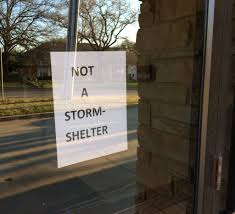
- In the wide open area, squat down, put your hands on your knees or covering your ears and place your head in between your knees. This will make you a smaller sized target for a lightening strike.
- Do NOT lie flat on the ground, as this gives the lightning a larger target.
- If you are hiking with a metal frame backpack, remove it as soon as you suspect lightening in the area. Be sure to leave it a minimum of 100 feet (30.5 m) from wherever you are taking shelter.
- If you’re in the water, get out quickly and stay clear of any metal objects. Water and metal will conduct an electric current.
- If you’re with a group of people, spread out to be no closer than 50 feet away from each other.
[wpgfxm_contentbox width=”90%” bg_color=”#AB45E6″ b_color=”#050C42″ style=”double” top=”2px” right=”none” bottom=”2px” left=”none” radius=”0px”] Subscribe Today for FREE to PREPARE Magazine and be Ready for Tomorrow![/wpgfxm_contentbox]
In event of a Lightning Strike.
If you or a person you know is struck by lightning, call 9-1-1 for help right away.
Examine him/her and attempt to provide aid by:
- Checking Breathing – if breathing is stopped, start mouth-to-mouth resuscitation.
- Checking Heartbeat – if the heart has stopped, begin CPR.
- Checking Pulse – if the he/she has and is breathing, search for any other potential injuries.
- Look for burns where the lightning entered into, as well as, left the body.
- Likewise be alert or nervous system damage, bone fractures and/or loss of hearing or vision.
After the Severe Thunderstorm passes keep these tips in mind:
- DO NOT assume that because the rain stopped or skies cleared, that lightning cannot strike.
- DO NOT drive through a flooded street. “Turn around, don’t drown!”
- Steer clear of from storm-damaged locations thus avoiding putting yourself and others in your care at risk.
- KEEP AWAY from downed power lines and be sure to report them right away.
- Keep listening to a NOAA Weather Report Radio or to regional radio or TV for updated details and instructions, since accessibility to roadways or some other neighborhood components may be blocked.
- Assist others who might need special care, such as babies, small children, parents of small children and the elderly or those with disabilities or special needs.
Spread the word. Share this post. Help keep your loved ones and others safe!



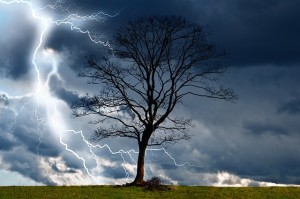


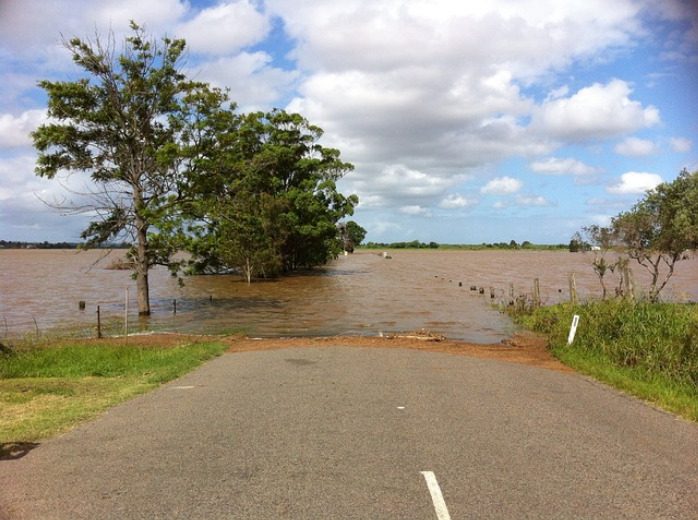


0 Comments
Trackbacks/Pingbacks